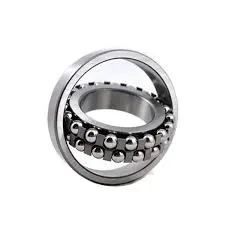
Nov . 18, 2024 12:42 Back to list
deep groove ball bearing vs angular contact
Deep Groove Ball Bearings vs. Angular Contact Bearings A Comprehensive Comparison
When it comes to industrial machinery, transportation systems, and various mechanical applications, bearings play a crucial role in ensuring smooth operation and longevity. Among the most commonly used types are deep groove ball bearings and angular contact bearings. While both serve the essential function of reducing friction between moving parts, they possess distinct characteristics that make them suited for different applications. In this article, we'll explore the key differences between deep groove ball bearings and angular contact bearings, as well as their respective advantages and ideal usage scenarios.
Deep Groove Ball Bearings
Deep groove ball bearings are among the most prevalent bearing types due to their versatility and usability in a wide range of applications. Their design includes an outer ring with a deep groove that accommodates the balls, allowing for both radial and axial loads. Here are some significant features
1. Load Capacity Deep groove ball bearings can support both radial and axial loads from both directions, making them suitable for applications where these loads are present.
2. Speed These bearings can operate at high speeds, thanks to their design, which minimizes friction. This ability is critical in applications such as electric motors, where efficiency is paramount.
3. Durability The robust design of deep groove ball bearings makes them durable and capable of withstanding harsh operating conditions. They are often used in machinery that experiences vibration or shock loads.
Common applications for deep groove ball bearings include electric motors, automotive components, household appliances, and various machinery in manufacturing settings. Their versatility and ability to handle different loads make them a go-to choice in many sectors.
Angular Contact Bearings
deep groove ball bearing vs angular contact

Angular contact bearings, on the other hand, are more specialized and are engineered to handle higher axial loads compared to deep groove ball bearings. The orientation of the raceways in angular contact bearings allows them to support significant axial loads in one direction while still accommodating radial loads. Here are some important characteristics
1. Load Direction Angular contact bearings can efficiently handle axial loads in one direction and are designed with a specific angle (the contact angle) that influences their load-carrying capability. This feature is advantageous for applications involving high thrust loads.
2. Preload Capability These bearings can be preloaded, which means they can be adjusted to minimize clearances between the ball and raceway. This preload feature helps improve rigidity and enhance overall performance, particularly in high-speed applications.
3. Speed and Stability Angular contact bearings are well-suited for high-speed applications and provide stability under various conditions, although they may require specific mounting arrangements to function optimally.
4. Orientation Due to their design, angular contact bearings can be arranged in sets (either series or back-to-back) to support combined loads, further enhancing their versatility for complex applications.
Typical applications for angular contact bearings include machine tools, pumps, and other equipment that require precise positioning and high-speed operation under heavy loads.
Conclusion
In summary, both deep groove ball bearings and angular contact bearings have their unique advantages and are designed for specific applications. Deep groove ball bearings are ideal for general-purpose usage and applications where both radial and axial loads are needed. Their robust nature and ease of installation make them a preferred choice in many industrial settings. On the other hand, angular contact bearings shine in applications requiring high axial load capacity and precise control, especially in high-speed scenarios.
When selecting between these two types of bearings, it is essential to consider the specific load requirements, speed, and overall design of the machinery in question. Understanding these differences will help engineers and technicians choose the right bearing type for their needs, ensuring efficient, reliable performances in various mechanical systems.
Latest news
-
Grooved Ball Bearing Design and Functionality
NewsJun.04,2025
-
Concrete Mixer Bearing Load Capacity Testing
NewsJun.04,2025
-
6004 Bearing Dimensions in Robotic Joint Designs
NewsJun.04,2025
-
Advantages of Single-Row Deep Groove Ball Bearings
NewsJun.04,2025
-
Applications of Deep Groove Ball Bearings in Automotive Systems
NewsJun.04,2025
-
Innovations in Bearing Pressing Machine Design
NewsJun.04,2025
